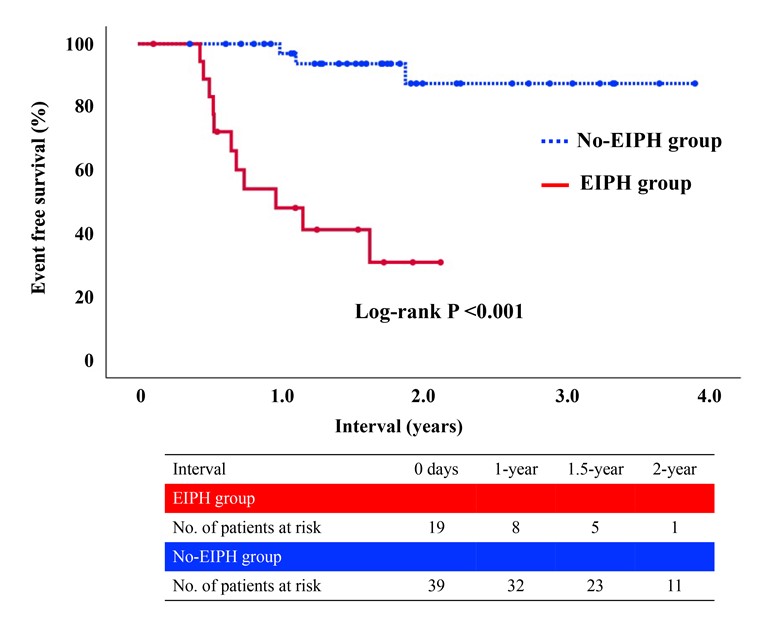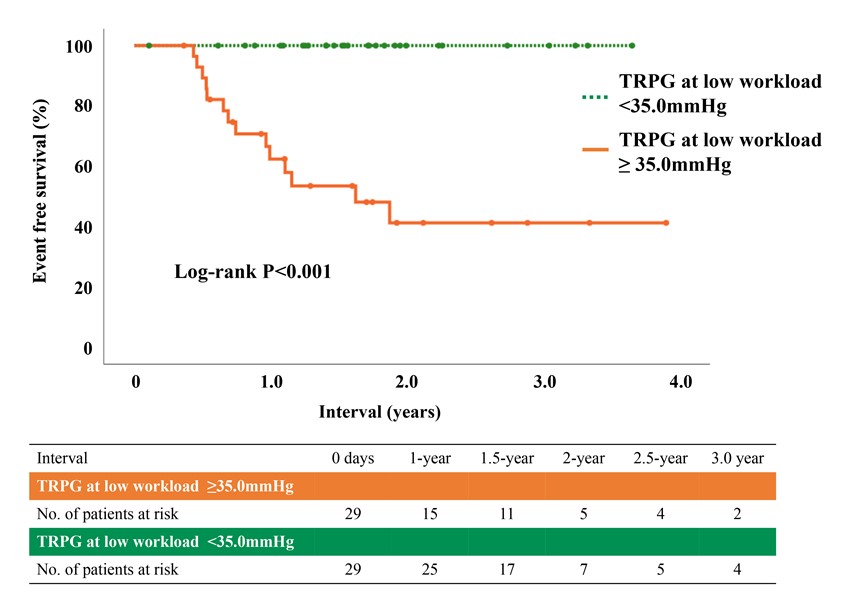About NCVC
Substitute Parameters of Exercise-Induced Pulmonary Hypertension and Usefulness of Low Workload Exercise Stress Echocardiography in Mitral Regurgitation
In asymptomatic patients with mitral regurgitation (MR), data of exercise-induced pulmonary hypertension (EIPH) are limited, and feasibility of evaluating EIPH is not high. It is pivotal in clinical settings to investigate prognostic impact of exercise-induced pulmonary hypertension (EIPH) in asymptomatic patients with moderate to severe mitral regurgitation (MR) and substitute parameters of EIPH at peak workload.
Masashi Amano and colleagues investigated 123 consecutive moderate to severe degenerative MR patients (aged 65±15, 55% men) who performed Exercise stress echocardiography (ESE) in National Cerebral and Cardiovascular Center. Echocardiographic data at rest and low and peak workload were stored. The endpoint was a composite of death, hospitalization for heart failure, and worsening of symptoms. EIPH was defined as TRPG at peak workload ≥ 50 mmHg [57 patients (46%)]. Early surgical intervention (surgery within 6 months after ESE) was performed in 65 patients.
What does this study add?
・In 58 patients with the watchful waiting strategy, prognosis in EIPH patients was poor compared with no-EIPH patients.

・TRPG at low workload was independently associated with TRPG at peak workload (β=0.67, p<0.001). TRPG at low workload ≥ 35.0 mmHg as well as EIPH were associated with poor prognosis in patients with the watchful waiting strategy.

How might this impact on clinical practice?
The importance of ESE and evaluating EIPH in patients with MR was re-acknowledged. TRPG at peak workload can be predicted by TRPG at low workload, and TRPG at low workload may be useful in real-world clinical settings.
last updated:2022/09/28
